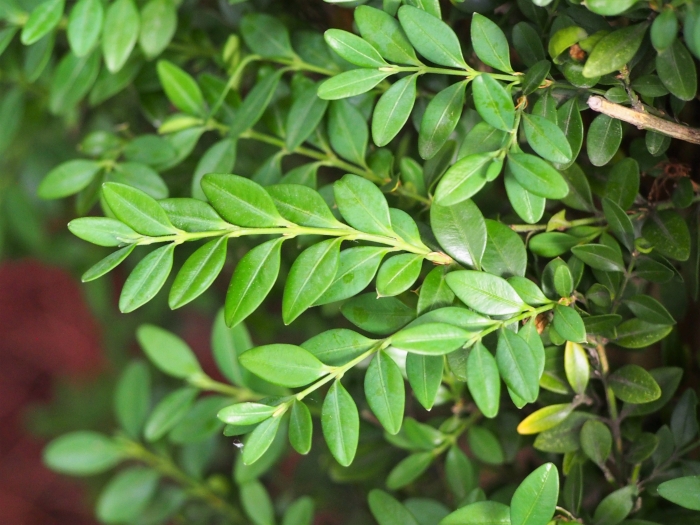Japanese Boxwood
(Buxus microphylla var. japonica)
Japanese Boxwood (Buxus microphylla var. japonica)
/
/

Agnieszka Kwiecień, Nova
CC BY-SA 4.0
Image By:
Agnieszka Kwiecień, Nova
Recorded By:
Copyright:
CC BY-SA 4.0
Copyright Notice:
Photo by: Agnieszka Kwiecień, Nova | License Type: CC BY-SA 4.0 | License URL: https://creativecommons.org/licenses/by-sa/4.0 | Uploader: Nova | Publisher: Wikipedia Commons | Title: Buxus_microphylla_var._japonica_'Winter_Gem'_2019-06-01_04.jpg | Notes: Buxus microphylla var. japonica 'Winter Gem' cultivated in Wrocław University Botanical Garden, Wrocław, Poland. | ObjectName: Buxus microphylla var. japonica 'Winter Gem' 2019-06-01 04 | UsageTerms: Creative Commons Attr



















Estimated Native Range
Summary
Buxus microphylla var. japonica, commonly known as Japanese Boxwood, is an evergreen shrub native to open woodlands and forest edges in Japan. It typically grows to a height of 3-5 feet (0.9-1.5 meters) and a width of 3-8 feet (0.9-2.4 meters). This boxwood variety has a dense, compact growth habit with small, glossy, dark green leaves. It is not particularly showy in terms of flowers, which are small and inconspicuous, but it is valued for its foliage and structure.
Japanese Boxwood is popular for its versatility and durability in the landscape. It is commonly used for formal hedges, border plantings, and as a foundational shrub in garden designs. It can also be shaped into topiary forms. This shrub is relatively low-maintenance, tolerating a range of soil types, though it prefers well-drained soils. It can grow in full sun to part shade and requires moderate watering. In terms of potential problems, Japanese Boxwood can be susceptible to boxwood blight and leaf miners. To prevent these issues, good air circulation and avoiding overhead watering are recommended.CC BY-SA 4.0
Japanese Boxwood is popular for its versatility and durability in the landscape. It is commonly used for formal hedges, border plantings, and as a foundational shrub in garden designs. It can also be shaped into topiary forms. This shrub is relatively low-maintenance, tolerating a range of soil types, though it prefers well-drained soils. It can grow in full sun to part shade and requires moderate watering. In terms of potential problems, Japanese Boxwood can be susceptible to boxwood blight and leaf miners. To prevent these issues, good air circulation and avoiding overhead watering are recommended.CC BY-SA 4.0
Plant Description
- Plant Type: Shrub
- Height: 3-5 feet
- Width: 3-8 feet
- Growth Rate: Moderate
- Flower Color: N/A
- Flowering Season: Spring
- Leaf Retention: Evergreen
Growth Requirements
- Sun: Full Sun, Part Shade
- Water: Medium
- Drainage: Medium
Common Uses
Bee Garden, Bird Garden, Border Plant, Deer Resistant, Fragrant, Groundcover, Hedges, Low Maintenance, Rabbit Resistant, Street Planting
Natural Habitat
Open woodlands and forest edges in Japan and Korea
Other Names
Common Names: Japanese Littleleaf Boxwood , Creole Box , Asama-Tsuge
Scientific Names: Buxus microphylla var. japonica , Buxus japonica , Buxus sempervirens var. japonica
GBIF Accepted Name: Buxus microphylla var. japonica (Müll.Arg. ex Miq.) Rehder & Wilson